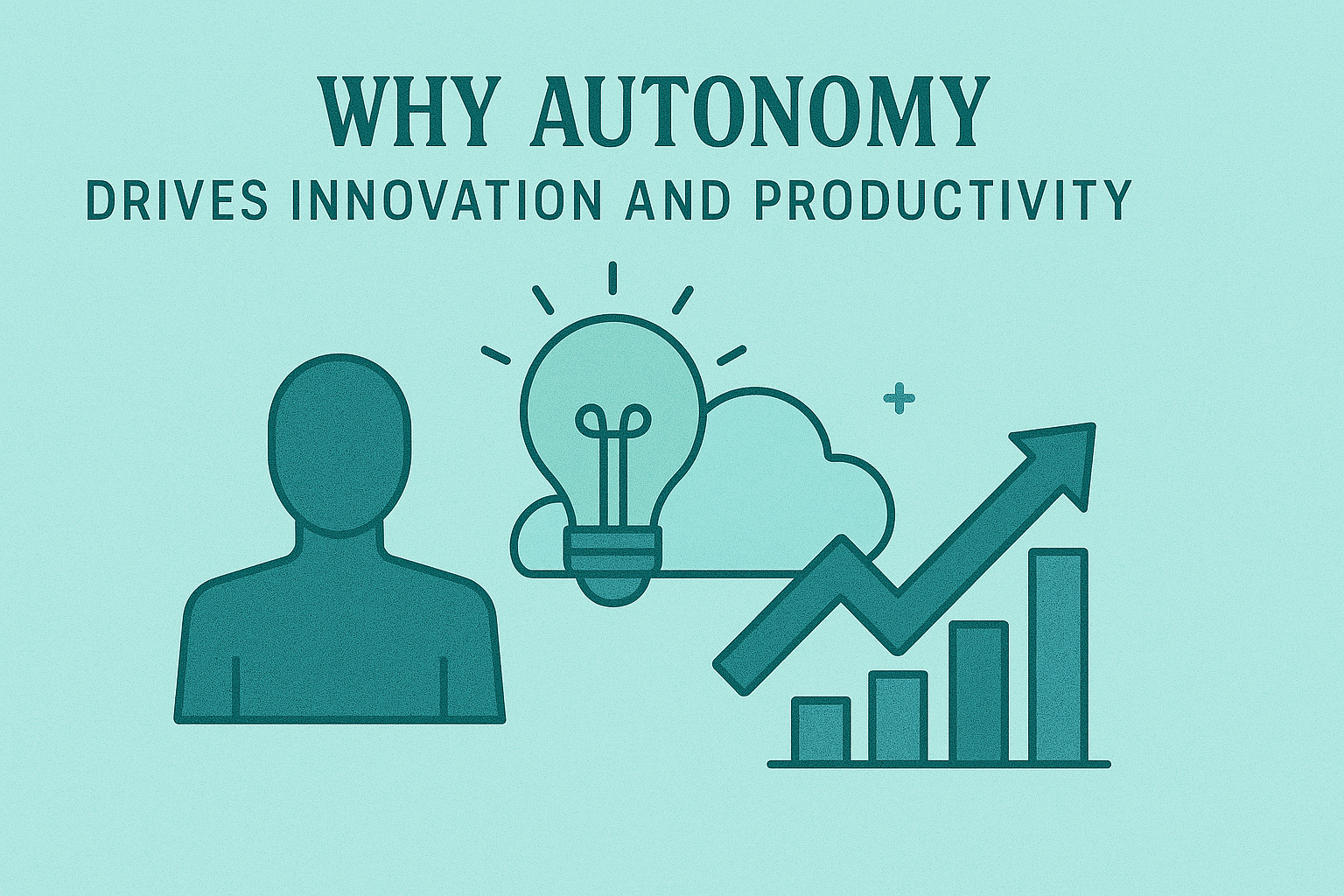Why Autonomy Drives Innovation and Productivity

In the fast-paced world of digital engineering, where complexity is high and the rate of change even higher, success depends on more than just technical talent or process efficiency. It depends on creating an environment where people are trusted to think, explore, and act. That environment is built on autonomy.
Autonomy isn’t about chaos or lack of direction. It’s about enabling individuals and teams to make meaningful decisions, take ownership of outcomes, and bring their full creativity to the table. It’s the oxygen that fuels both innovation and productivity - and the secret ingredient behind high-performing engineering cultures.
In a world where we’re being asked to deliver more, faster, and better, autonomy is not a luxury. It’s a strategic necessity.
What Do We Mean by Autonomy?
At its core, autonomy means giving engineers and teams the freedom to decide how best to achieve their goals. It involves:
Clear purpose and direction – teams know what they’re aiming for and why it matters.
Trust to make decisions – without excessive approvals or micro-management.
Space to explore and innovate – within defined boundaries, but with permission to challenge, experiment, and learn.
Importantly, autonomy does not mean absence of accountability. It thrives when there is alignment on outcomes, supported by transparency and a culture of continuous feedback.
The Innovation Effect: Autonomy Unlocks Creativity
Innovation doesn’t flourish in command-and-control environments. It thrives where people are given permission to think differently, take smart risks, and experiment without fear of failure.
When engineers have autonomy:
They question assumptions and spot better solutions.
They’re more likely to challenge complexity, refactor code, or rethink architecture.
They initiate new ideas - from performance improvements to new features - without waiting to be asked.
Teams with high autonomy often solve problems no one knew existed. They build better because they’re not just delivering - they’re inventing.
The Productivity Dividend: Autonomy Builds Momentum
Autonomy is also a powerful driver of productivity - but not in the “doing more hours” sense. It’s about doing more of the right work, more effectively.
Autonomous teams:
Spend less time waiting for decisions.
Are less distracted by status reporting or permission-seeking.
Optimise their own flow and tooling.
Make decisions closer to the work, with better context.
This leads to faster delivery, better quality, and a more energised team. Autonomy reduces friction - and when you remove friction, speed follows.
The Human Side: Autonomy and Motivation
Decades of research (from Daniel Pink’s Drive to Google’s Project Aristotle) have shown that autonomy is a key driver of intrinsic motivation.
People do their best work when they:
Feel trusted.
Have control over their environment.
Can make meaningful contributions.
Without autonomy, even the most talented engineers disengage. They become ticket-takers, not problem-solvers. With it, they feel invested, energised, and proud of what they build.
Barriers to Autonomy (and How to Overcome Them)
Despite the clear benefits, many organisations unintentionally undermine autonomy. Common blockers include:
Micromanagement – leaders solving problems for teams instead of coaching them through.
Unclear goals – when the “why” is missing, autonomy feels risky or confusing.
Siloed decision-making – decisions made far from the work, with little engineering input.
Process rigidity – overly prescriptive workflows that discourage creativity.
To foster autonomy, leaders need to get out of the way - but not out of the picture. That means providing context, alignment, and support - then stepping back.
How to Create an Autonomy-Friendly Culture
Here’s how engineering leaders can create the conditions where autonomy leads to real innovation and productivity:
✅ Start with Purpose
Clear, compelling goals are the foundation of autonomy. Make sure every team understands why their work matters and what success looks like.
✅ Trust and Delegate
Empower teams to make decisions. Let them choose how to deliver, what tools to use, and when to challenge assumptions. Trust builds confidence and competence.
✅ Create Boundaries, Not Bureaucracy
Autonomy thrives with constraints. Use principles, playbooks, and shared values - not rigid rules - to guide decision-making.
✅ Invest in Capabilities
Autonomy without support is abandonment. Provide access to mentoring, learning, good infrastructure, and space to grow.
✅ Reward Initiative, Not Just Compliance
Recognise teams and individuals who challenge norms, try new things, or go above and beyond - even if everything doesn’t go to plan.
Key Takeaways
✅ Autonomy is a catalyst for both innovation and productivity - it fuels better ideas and faster delivery.
✅ It’s not about letting go completely - it’s about leading differently: through trust, clarity, and support.
✅ When engineers are free to think and act, they take ownership of outcomes - not just tasks.
✅ Autonomy drives motivation, creativity, and commitment - essential traits for high-performing teams.
✅ The best ideas often come from those closest to the work - autonomy gives those ideas room to grow.
Final Word
Autonomy isn’t the enemy of alignment - it’s what makes alignment work. It turns passive executors into active problem-solvers. It transforms delivery teams into innovation engines.
In the race to deliver digital products that delight users and drive business value, autonomy is the secret weapon. Not because it gives people free rein, but because it gives them responsibility, space, and trust.
And when engineers are trusted to do what they do best, they don’t just deliver - they innovate, they lead, and they stay.
That’s the real power of autonomy.
Engineering leader blending strategy, culture, and craft to build high-performing teams and future-ready platforms. I drive transformation through autonomy, continuous improvement, and data-driven excellence - creating environments where people thrive, innovation flourishes, and outcomes matter. Passionate about empowering others and reshaping engineering for impact at scale. Let’s build better, together.
